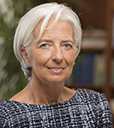By Antoinette Sayeh
Last week, my colleague Hugh Bredenkamp talked about how the IMF is helping the low-income countries overcome the global economic crisis. This week, I want to follow this theme, but hone in more on sub-Saharan Africa. I know this region reasonably well, both from current and past vantage points. In my present role, I am the director of the IMF’s African department. Previously, I was minister of finance in Liberia and, before that, I spent a significant part of my long World Bank career working on African countries. Grappling with the kinds of economic challenges that affect the lives of millions of Africans is a passion for me.
In this first post, I want to talk about growth prospects for Africa. Let’s take a step backwards. Before the global recession, sub-Saharan Africa was generally booming. Output grew by about 6½ percent a year between 2002 and 2007—the highest rate in more than 30 years. This acceleration was broader than ever before, going beyond the typical short-lived commodity driven booms and touching many more countries. Hopes were high that the region was slowly but surely turning the corner.

Workers making footwear in Nigeria at a factory funded by Hong Kong investment. (photo: Qiu Jun/Xinhua)
Then, in a great reversal of fortune, the global economy went into a tail-spin. Initially, we hoped that the fallout in Africa would be limited. And, indeed, when the global financial tsunami made landfall, it first hit the relatively small number of countries with well-developed financial linkages to international capital markets. South Africa in particular faced difficult challenges as portfolio outflows spiked. Together with Ghana, Uganda and several other frontier markets, its currency plunged, confidence dipped, and foreign direct investment slowed.
But the impact didn’t stop there. Falling export demand and commodity prices battered economic activity in many more countries, including oil exporters in western and central Africa, causing fiscal and external balances to deteriorate significantly. Remittances from the diaspora shrank and credit dried up. The result, in many countries, was stalled growth.
Continue reading →
Filed under: Africa, concessional lending, Debt Relief, Economic Crisis, growth, LICs, Low-income countries | Tagged: Botswana, Burundi, Côte d’Ivoire, Congo, diamonds, Ethiopia, food and fuel crisis, frontier markets, Liberia, oil exporters, poor, recession, Seychelles, Sierra Leone, South Africa, tourism, Uganda | 4 Comments »











 By
By 





